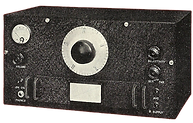

Metrocrest Amateur Radio Society

Way Back When
October

Georges Leclanché (October 9, 1839 – September 14, 1882) was a French electrical engineer remembered for his invention of the Leclanché cell, one of the first modern electrical batteries.
It used a conducting solution (electrolyte) of ammonium chloride with a negative terminal of zinc (anode/oxidation) and a positive terminal of manganese dioxide (cathode/reduction). This “wet cell” was the forerunner to the widely-used zinc-carbon battery. Today’s alkaline battery is a direct descendant of Leclanché’s invention.
The Leclanché Company of today is a Swiss manufacturer of large-format lithium-ion cells as well as consumer batteries.


Édouard Eugène Désiré Branly (23 October 1844 – 24 March 1940) was a French inventor, physicist and professor. He is primarily known for his early involvement in wireless telegraphy and his invention in 1890 of what he called the “radio-conductor.” This was basically a glass tube filled with loose metal filings. In its normal state it has a high electrical resistance. In the presence of electro-magnetic waves, the filings become conductors of electricity.
Sir Oliver Lodge further developed the idea calling it a “coherer” which was the basis for radio reception. The coherer remained in widespread use until about 1907, when it was replaced by crystal detectors.

Branly is credited with coining the word “radio” as a prefix to describe his invention.
October Birthdays
George Westinghouse, Jr. (October 6, 1846 – March 12, 1914) was a prolific inventor, gaining his first patent at the age of 22. He influenced the course of history by enabling the growth of the railroads through his inventions and by promoting the use of electricity for power and transportation. His electric company became one of the greatest electric manufacturing organizations in the United States.

Westinghouse was one of Thomas Edison’s main rivals in the early implementation of the American electricity system. In July 1888, Westinghouse licensed Nikola Tesla’s American patents for the induction motor and transformer designs. Westinghouse’s electricity distribution system, based on alternating current, ultimately prevailed over Edison’s insistence on direct current.


Reginald Fessenden “Father of AM”
Reginald Aubrey Fessenden (October 6, 1866 – July 22, 1932) was an electrician, chemist, and employee of Thomas Edison who is responsible for transmitting the first voice message over radio in 1900 and the first radio broadcast in 1906. He is credited with being the first to use the phrase, “continuous waves.”
Fessenden felt that, a continuous-wave transmitter that produced a pure sine wave signal on a single frequency could be used for quality audio transmissions. By adding a simple carbon microphone, the strength of the signal could be varied in order to add sounds to the transmission. In other words, amplitude modulation would be used to impress audio on the radio frequency carrier wave. However, it would take many years of expensive development before even a prototype alternator-transmitter would be ready and a few more years beyond that for high-power versions to become available.
According to the National Capitol Commission of Canada, “he invented the modulation of radio waves, the ‘heterodyne principle,’ which allowed the reception and transmission on the same aerial without interference.”

Fessenden’s Synchronous Rotary-Gap Transmitter at Brant Rock, Massachusetts

On October 23, 1914 the National Radio Company incorporated in Massachusetts as the National Toy Company. By 1923 the product line included toys, food mixers, and radio components. It was about this time that two engineers, Fred H. Drake and Glen Browning, approached National to manufacture components for a radio receiver of their own design.

1934 HRO Prototype
By the early 1930s National had established a reputation with the amateur radio community based upon their own line of regenerative receivers, including the SW-3 and SW-5.
National provided equipment to the Allies throughout WWII. After the war, during the 50s and 60s, National marketed a wide range of amateur equipment, much of that still sought after by collectors and restorers.
Through the 1970s and 1980s, National survived as a government contractor and ceased development and production of civilian equipment. However, by 1991, after continuing difficulties, the company ceased trading.

On October 17, 1919, the Radio Corporation of America (RCA) was established. The corporation was formed at the request of the federal government by General Electric (which included the assets of Marconi Wireless Telegraph Company of America), the United Fruit Company, Westinghouse Electric Corporation, American Telephone & Telegraph (AT&T), and assets controlled by the US Navy.
The new company created a federally-mandated monopoly on radio technology, as well as the founding of the National Broadcasting Company (NBC) in the US. GE and Westinghouse held majority interest in the company until 1930.

On October 11, 1904, Father Roberto Landell de Moura, a Brazilian Roman Catholic priest and inventor, obtained the first of three US patents related to radio: The Wave Transmitter. He publicly demonstrated a radio broadcast of the human voice over 8 km in São Paulo on June 3, 1900.